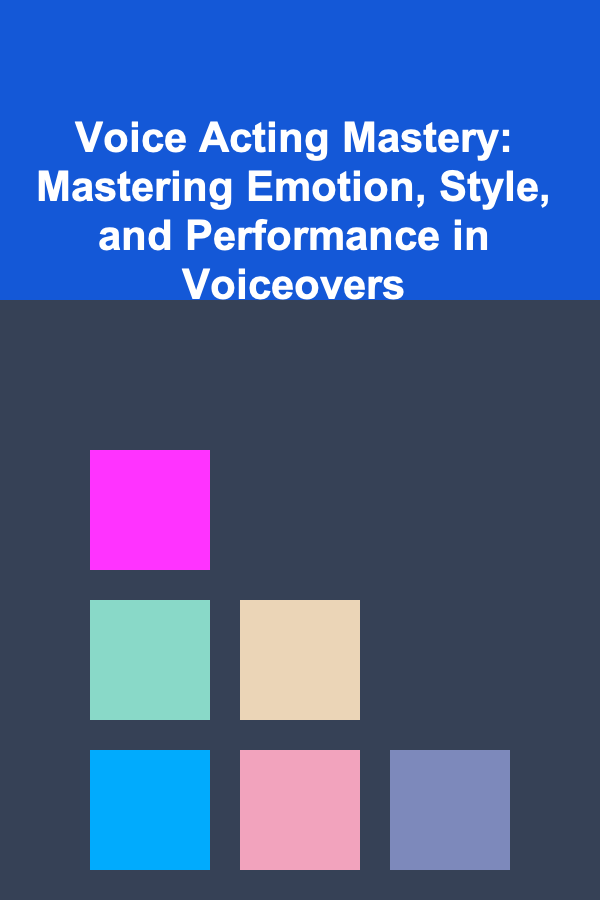
The Content Writer's Guide: Crafting Compelling Copy for Any Audience
ebook include PDF & Audio bundle (Micro Guide)
$12.99$9.99
Limited Time Offer! Order within the next:

Content writing is one of the most critical elements of digital marketing and communication. Whether you are crafting blog posts, website copy, social media updates, or email newsletters, the ability to write compelling copy that resonates with your audience is key to success. However, writing for different audiences and in various formats requires more than just knowing grammar rules and sentence structure. It demands an understanding of psychology, communication strategies, and the ability to adapt to the ever-changing landscape of online content consumption.
In this guide, we will delve deep into actionable strategies that will help you craft content that not only attracts attention but also engages, persuades, and converts. By following the techniques outlined below, you will be able to write powerful copy for any audience, regardless of the medium or platform.
Understand Your Audience
The foundation of any great content is understanding the audience you're writing for. Without a clear grasp of your target reader's needs, interests, and pain points, your content will miss the mark.
Actionable Tips:
- Create Audience Personas: Begin by developing detailed audience personas. These are fictional representations of your ideal readers or customers, based on real data and insights. Include demographic details, job titles, interests, challenges, goals, and the type of content they typically engage with. This helps ensure that your writing speaks directly to their needs and desires.
- Conduct Audience Research: Use analytics tools, surveys, and social media insights to gather data about your audience. Understand what content they interact with, what questions they have, and what problems they seek solutions for. Additionally, explore forums, Reddit threads, or industry-specific communities to get a feel for their language and concerns.
- Identify Their Stage in the Buyer's Journey: Different stages in the buyer's journey (awareness, consideration, decision) require different types of content. For example, awareness-stage content should focus on providing valuable, informative insights, while decision-stage content should emphasize benefits, social proof, and calls to action.
Start with a Strong Hook
The first few sentences of your content are crucial---they either hook the reader or send them scrolling past. A compelling hook should grab attention, create curiosity, or resonate emotionally with your reader.
Actionable Tips:
- Use Intriguing Questions: Pose a question that addresses the audience's pain points or triggers curiosity. For example, "Are you tired of feeling overwhelmed by your to-do list?" or "What if you could double your sales in just 30 days?"
- Start with a Bold Statement: A bold, controversial, or surprising statement can pique interest. For instance, "Most marketers are wasting 80% of their budget---here's how to stop."
- Make It Personal: Use the reader's language and make them feel like you're speaking directly to them. Starting with "You" or "Imagine" helps to engage readers on a personal level. Example: "Imagine waking up tomorrow with more free time and fewer stressors."
Focus on Clarity and Simplicity
In a world where attention spans are shorter than ever, clarity is essential. Overly complicated sentences or jargon can quickly turn readers off. Your writing should be clear, concise, and easy to understand.
Actionable Tips:
- Use Short Sentences and Paragraphs: Break your content into easily digestible chunks. Keep sentences short and direct, especially when writing for the web, where people tend to skim rather than read deeply.
- Avoid Unnecessary Jargon: While certain industries may require specialized terminology, ensure that your language remains accessible to your audience. If jargon is necessary, define it clearly to avoid alienating your readers.
- Emphasize the Key Point: Highlight the most important information at the beginning of your content and ensure the message is simple and memorable. If readers can only remember one thing from your piece, make it the most critical point.
Write in the Active Voice
Writing in the active voice makes your content more engaging, direct, and impactful. It gives your sentences a sense of urgency and encourages readers to act.
Actionable Tips:
- Active vs. Passive Voice: In the active voice, the subject of the sentence performs the action. For example, "The manager reviewed the report." In the passive voice, the action is performed on the subject: "The report was reviewed by the manager." Active voice is usually more direct and dynamic, while passive voice can seem distant and less engaging.
- Make Your Content Dynamic: For example, instead of saying "The product can be used by anyone," say "Anyone can use the product." The latter is more immediate and puts the reader in the center of the action.
Use Emotional Appeal
Humans are emotional beings, and decisions are often made based on how something makes us feel. Great content taps into emotions---whether it's joy, fear, excitement, or curiosity---because emotions drive action.
Actionable Tips:
- Tell Stories: Storytelling is one of the most powerful tools for engaging readers emotionally. Share customer success stories, case studies, or personal anecdotes to make your content relatable and memorable.
- Use Sensory Words: Words that trigger the senses---like "crisp," "warm," or "vibrant"---can evoke strong imagery and connect on a deeper emotional level with the reader.
- Create Urgency: If you want your readers to take action, make them feel a sense of urgency. Words like "limited time," "only available today," or "act fast" can prompt readers to act immediately.
Structure Your Content for Easy Scanning
Most online readers don't read content word-for-word; they scan it for key points. Therefore, structuring your content for easy scanning is crucial to keeping readers engaged.
Actionable Tips:
- Use Subheadings: Break your content into sections with descriptive subheadings. This helps readers easily navigate your content and find the information they're looking for.
- Bullet Points and Lists: Bullet points and numbered lists make it easy to present key ideas concisely. Use them to highlight important information, tips, or steps.
- Highlight Key Takeaways: Bold or italicize important points to make them stand out. This helps readers quickly absorb your content, even if they don't read it in its entirety.
Craft Compelling Calls to Action
A call to action (CTA) is the critical next step for guiding your reader towards the desired action---whether that's signing up for a newsletter, downloading an ebook, or purchasing a product.
Actionable Tips:
- Be Clear and Direct: Your CTA should clearly tell the reader what to do next. Use verbs like "download," "subscribe," "get started," or "learn more" to create a sense of direction.
- Make It Urgent: Incorporate urgency into your CTA by using phrases like "limited offer," "only a few spots left," or "sign up before it's too late."
- Place CTAs Strategically: Position your CTA where it makes the most sense---at the end of the post, in the middle of long-form content, or even as a sticky button on the screen.
Optimize for SEO
In today's digital landscape, SEO is crucial for ensuring your content reaches its intended audience. Even if your content is amazing, it won't do much good if no one can find it. Optimizing for search engines is essential.
Actionable Tips:
- Research Keywords: Use tools like Google Keyword Planner, Ahrefs, or SEMrush to find keywords that your target audience is searching for. Integrate these keywords naturally into your content, including in titles, subheadings, and throughout the body.
- Optimize Meta Descriptions and Titles: The meta description and title tag are often the first things users see in search engine results. Write compelling and informative descriptions that accurately reflect your content and include your target keywords.
- Focus on Content Quality: Quality matters more than quantity. Search engines prioritize well-researched, in-depth, and valuable content. Aim to provide comprehensive answers to user queries, backed up with reliable sources and examples.
Edit and Proofread
No matter how great your first draft is, it's essential to review and revise your content. Editing is where you turn good content into great content.
Actionable Tips:
- Take a Break Before Editing: After finishing your draft, step away for a bit. Returning to your content with fresh eyes will help you spot mistakes, awkward phrasing, or areas for improvement.
- Use Tools for Grammar and Clarity: Tools like Grammarly, Hemingway, or ProWritingAid can help identify errors and suggest improvements for clarity and readability.
- Read Aloud: Reading your content aloud helps you catch issues with sentence flow, tone, or wordiness. It also ensures that your content sounds natural and conversational.
Conclusion
Crafting compelling copy for any audience involves a deep understanding of your readers' needs, emotions, and behaviors. It's not just about writing well; it's about creating content that connects, persuades, and drives action. By implementing the strategies outlined above---starting with audience research, using emotional appeal, optimizing for SEO, and crafting clear calls to action---you can create content that resonates deeply and delivers results. With practice, patience, and consistency, you'll be able to master the art of writing compelling copy that engages and converts every time.

How to Create a Digital Home Security Strategy
Read More
How to Handle Property Inspections for Your Rental Home
Read More
How to Make Money Producing Music from Home: A Beginner's Guide
Read More
How To Understand the Genetics of Intelligence
Read More
How to Use ETFs to Diversify Your Investment Portfolio
Read More
Voice Acting Mastery: Mastering Emotion, Style, and Performance in Voiceovers
Read MoreOther Products

How to Create a Digital Home Security Strategy
Read More
How to Handle Property Inspections for Your Rental Home
Read More
How to Make Money Producing Music from Home: A Beginner's Guide
Read More
How To Understand the Genetics of Intelligence
Read More
How to Use ETFs to Diversify Your Investment Portfolio
Read More